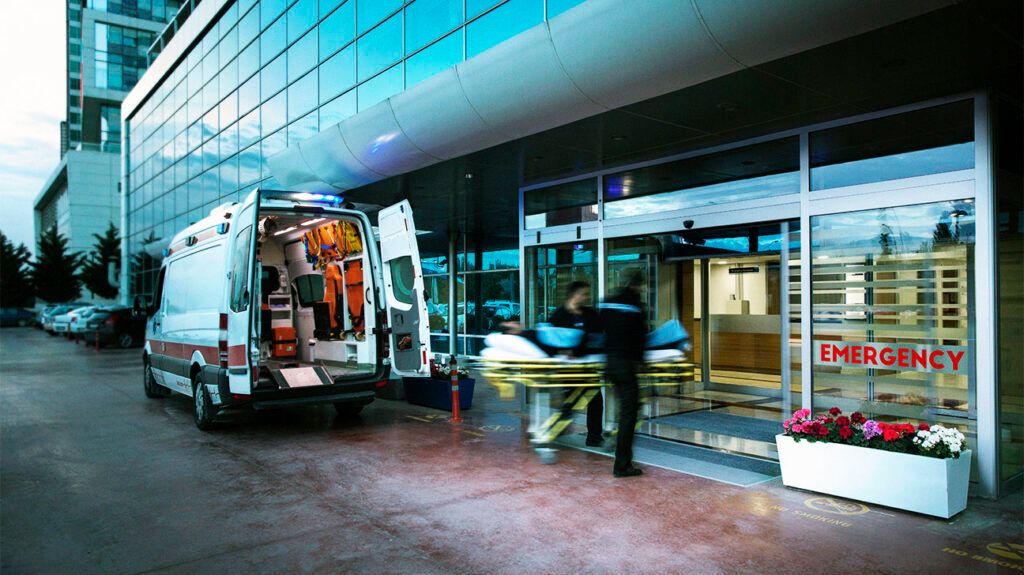Secondary traumatic stress (STS) describes the emotional distress a person may experience from indirect exposure to a traumatic event. It mirrors the symptoms of post-traumatic stress disorder (PTSD).
PTSD is a is a mental health condition that can occur after a person directly experiences a traumatic event. Examples of events that may trigger PTSD include wars, crimes, accidents, the death of a loved one, or any kind of abuse. Symptoms can include flashbacks, nightmares, anxiety, guilt, and difficulty sleeping.
STS refers to when a person experiences similar symptoms after secondary exposure to a traumatic event. As such, many types of professionals, such as doctors, service workers, and emergency workers, are vulnerable to developing this type of stress.
This article explores what STS is in more detail, including its causes, symptoms, and treatment.

Health experts typically consider STS to be a form of PTSD. The Diagnostic and Statistical Manual of Mental Disorders, Fifth Edition (DSM-5) considers STS as part of the criteria for a PTSD diagnosis.
Other names that healthcare professionals may use to describe STS include:
- secondary trauma
- secondary PTSD
- vicarious trauma
- vicarious traumatization
- compassion fatigue
- critical incident stress
- trauma exposure response
Mental health resources
Visit our dedicated hub for more research-backed information and resources on mental health and well-being.
STS describes the emotional distress a person may experience
Everyone is potentially at risk of exposure to at least one traumatic event during their lifetime. However, individuals in helping professions that provide assistance and support to those who experience trauma are at a
- social workers
- emergency responders
- counselors and therapists
- hospice staff
- healthcare professionals
According to PTSD UK, the symptoms of STS mirror those of PTSD.
People experience stress in different ways and may manifest different reactions. These can involve a combination of cognitive, behavioral, emotional, and physical symptoms.
Emotional symptoms may include:
Cognitive symptoms can include:
- apathy
- difficulty concentrating
- rigid thinking
- preoccupation with trauma
- perfectionism
Behavioral symptoms may include:
- sleep problems
- withdrawal
- changes in appetite
- hypervigilance
- elevated startle response
Physical symptoms can include:
- difficulty breathing
- muscle aches and joint pain
- impaired immune system
- increased heart rate
- increased severity of medical concerns
STS can have a
Mental health professionals can diagnose STS and PTSD using screening tools, structured interviews, and self-report questionnaires. Typically, these assessments evaluate the condition according to the criteria in the DSM-5.
The DSM-5 includes STS as part of the cluster of trauma and stressor-related disorders. According to the DSM-5, STS is a criterion A stressor for PTSD. It refers to STS as indirect exposure to aversive details of a trauma. It also notes that it is more common in certain careers, such as first responders and medics.
Mental health professionals may use the Secondary Traumatic Stress Scale (STSS) to help with a diagnosis. This is a list of 17 statements that can help to measure and assess those who may have STS.
Read about PTSD diagnosis.
According to the United Kingdom charity Mind, although STS means that the original trauma occurred to another individual, this does not make the impact of STS less significant than any other kind of PTSD.
As such, treatment options may be similar for other types of PTSD. These can include psychotherapies such as cognitive behavioral therapy (CBT) and cognitive processing therapy (CPT). They may also include medications, such as certain antidepressants.
Preventive and treatment strategies to help address STS include:
- establishing a work-life balance
- relaxation and stress-management techniques
- creative expression
- assertiveness training
- focusing on self-care
- journaling
- recognizing success and creating meaning
- asking others for help
STS refers to the emotional distress a person may experience after indirect exposure to a traumatic event. This can include secondary exposure to crimes, accidents, and forms of abuse.
It is a form of PTSD that
The symptoms of STS mirror those of PTSD and can include trouble sleeping, difficulty concentrating, and hypervigilance. As such, the diagnostic process is also similar and will require contacting a mental health professional.
Treatment for STS may involve a combination of therapy and medications. Preventive steps can include stress-management techniques, journaling, and creating a work-life balance.
